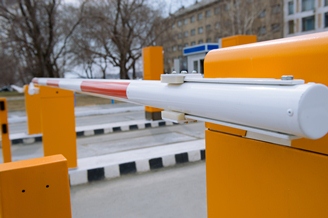
• Habit - just what they have always done.
• Lack of information or knowledge about alternative modes of travel.
• Strong psychological attachment to the car.
• Perception that alternatives are more expensive than the car.
• The additional effort required to use an alternative. Car is comfortable and easy choice.
• Distances to travel.
• Commitments outside of work, such as childcare or carer responsibilities.
• Physical ability.
• The weather.
• Lack of facilities such as cycle parking, storage lockers, bus stops close by.
• Lack of individual responsibility to do their bit for the environment.
• Lack of Senior Management support.
• Lack of alignment with Corporate Policy.
• Limited awareness of the benefits of a Travel Plan.
• Difficulty in identifying costs of Travel Plans.
• Lack of resources – particularly personnel resources.
• Lack of guidance on the Travel Plan process.
• Budgetary resources required to implement a Travel Plan.
• Lack of information about the alternative modes of travel.
• The need for a coordinated and managed approach.
There are a number of approaches you can take to help both employees and the organisation itself to overcome these barriers.
There is a need to promote the business benefits of implementing a Travel Plan. See Key Benefits of a Travel Plan. Many organisations and individuals are not aware of the benefits that a Travel Plan can offer them.
You need to spell out to employees and employers the specific benefits of a Travel Plan within your organisation. Consider things such as the personal impact of a Travel Plan, or the impact on organisational productivity and reputation within the local community.
This could be about promoting to Senior Management, the role that a Travel Plan can play as part of their Environmental Management Systems, in aiding ISO accreditation. It is about raising the profile of a Travel Plan within Corporate Policy.
From an employee point of view, it could be about demonstrating the cost savings to be made by opting to car share or take public transport 1 or 2 days a week. Being able to demonstrate real cost savings will grab their attention.
It is about making as much “noise” as possible about the measures you have in place and the alternative modes that are available. You will only encourage people to change, if you can show them the benefits to themselves and give them information and incentives to make it as easy as possible. Consider providing employees with a limited trial travel pass and timetable information or matching them to a possible car share partner and showing them the potential savings to be made by car sharing.
In order to be successful, the Travel Plan process requires a structured, coordinated approach. There is a need for both financial and personnel resources. Having a Travel Plan Coordinator in place will have a significant impact on the success of your Plan as you have someone with responsibility for directing and implementing activities. Access to personnel and financial resources is not only important for implementing measures, but also for the monitoring stages too.
Making use of Working Groups and Mode Groups is another way to increase the personnel resources available to you. You could make use of these groups to communicate information and assist with the implementation of particular measures.
Barriers can be overcome through the demonstration of Senior Management commitment (“Buy in”) to the Travel Plan process. This will impact on the overall perception of the Travel Plan throughout the organisation and the success of measures and initiatives that are implemented. If you can secure this “buy in” right at the start of the Travel Plan process then you should build on this with each measure or initiative that you introduce. It is about leading by example, so why not consider having a Senior Management Travel Plan” Champion” to endorse your Travel Plan activities. Encourage the CEO to cycle to work, consider removing marked car parking spaces for Board Members. These types of changes show employees that the Senior Management team is committed to the success of the Travel Plan.
There is a host of useful information and guidance available but there is a need to make this information more readily available to organisations. Good sources of information and guidance are Energy Saving Trust, Greener Scotland and Transport for London. By giving Senior Management and employees as much guidance and information about the Travel Plan process as possible you will break down some of the misconceptions that exist and start to make people review their current travel patterns. It is about making the guidance as accessible as possible to everyone who needs it.